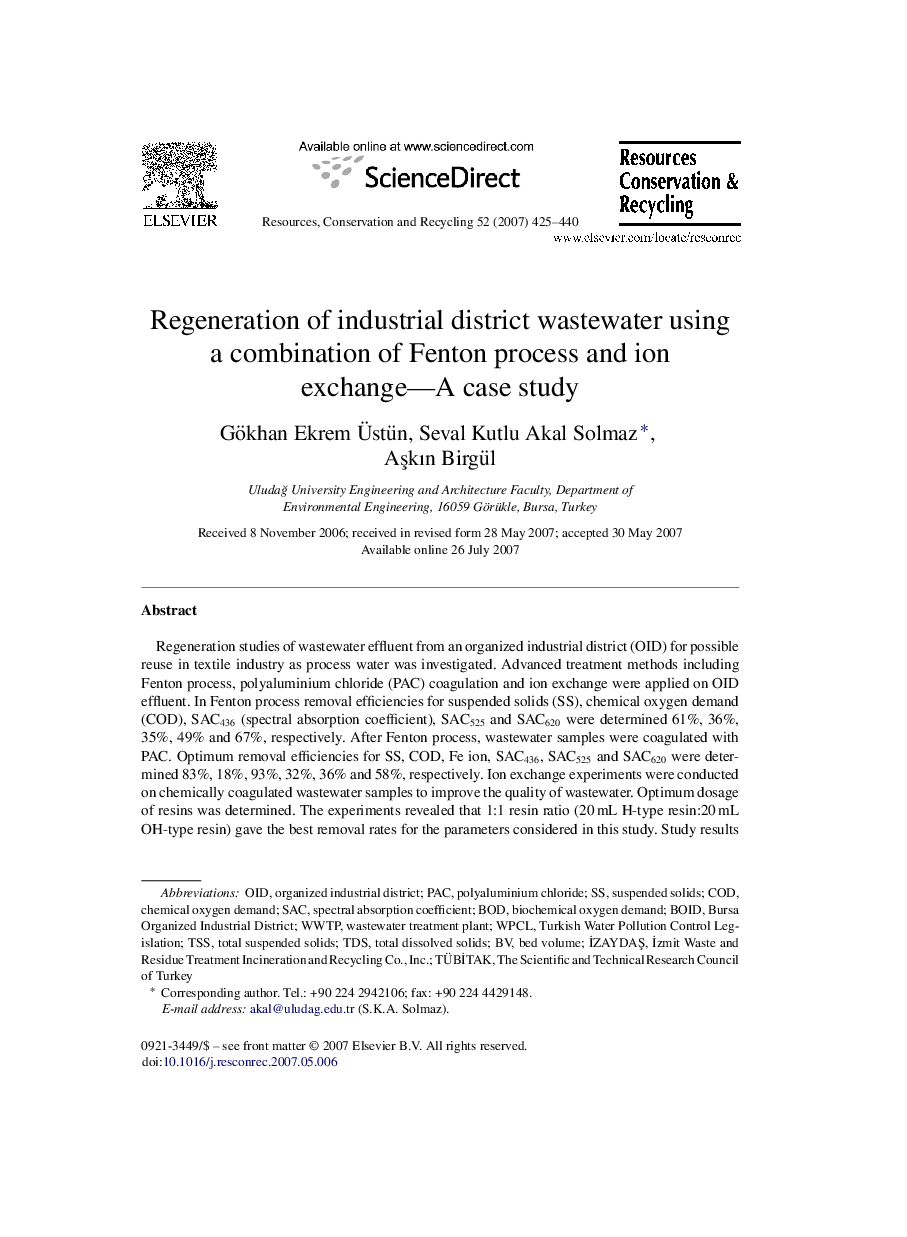| Article ID | Journal | Published Year | Pages | File Type |
|---|---|---|---|---|
| 1063919 | Resources, Conservation and Recycling | 2007 | 16 Pages |
Regeneration studies of wastewater effluent from an organized industrial district (OID) for possible reuse in textile industry as process water was investigated. Advanced treatment methods including Fenton process, polyaluminium chloride (PAC) coagulation and ion exchange were applied on OID effluent. In Fenton process removal efficiencies for suspended solids (SS), chemical oxygen demand (COD), SAC436 (spectral absorption coefficient), SAC525 and SAC620 were determined 61%, 36%, 35%, 49% and 67%, respectively. After Fenton process, wastewater samples were coagulated with PAC. Optimum removal efficiencies for SS, COD, Fe ion, SAC436, SAC525 and SAC620 were determined 83%, 18%, 93%, 32%, 36% and 58%, respectively. Ion exchange experiments were conducted on chemically coagulated wastewater samples to improve the quality of wastewater. Optimum dosage of resins was determined. The experiments revealed that 1:1 resin ratio (20 mL H-type resin:20 mL OH-type resin) gave the best removal rates for the parameters considered in this study. Study results indicated that quality of the wastewater was suitable for the process water characteristics of textile industry and unit wastewater treatment cost was determined as 2.54 €/m3.
